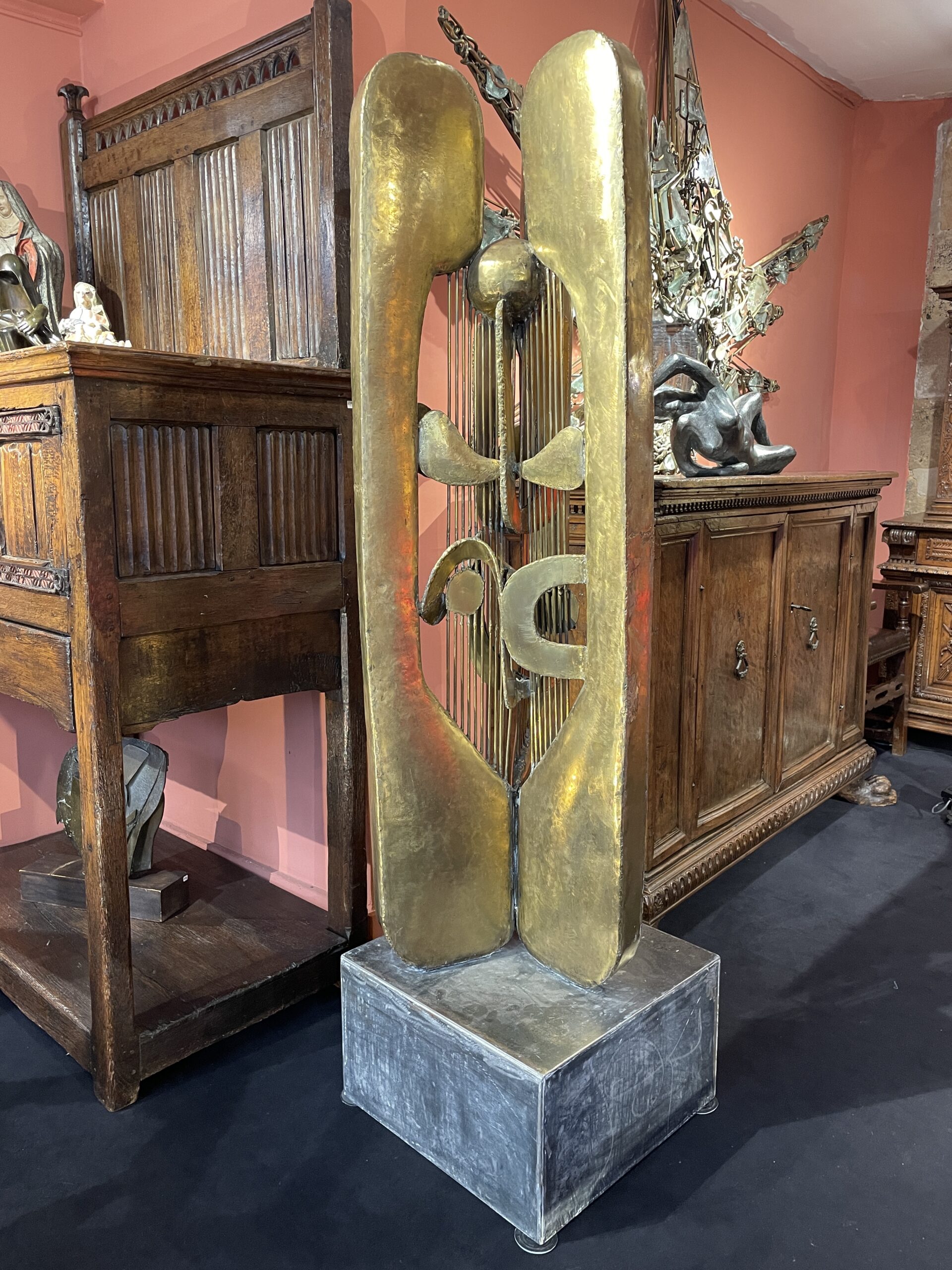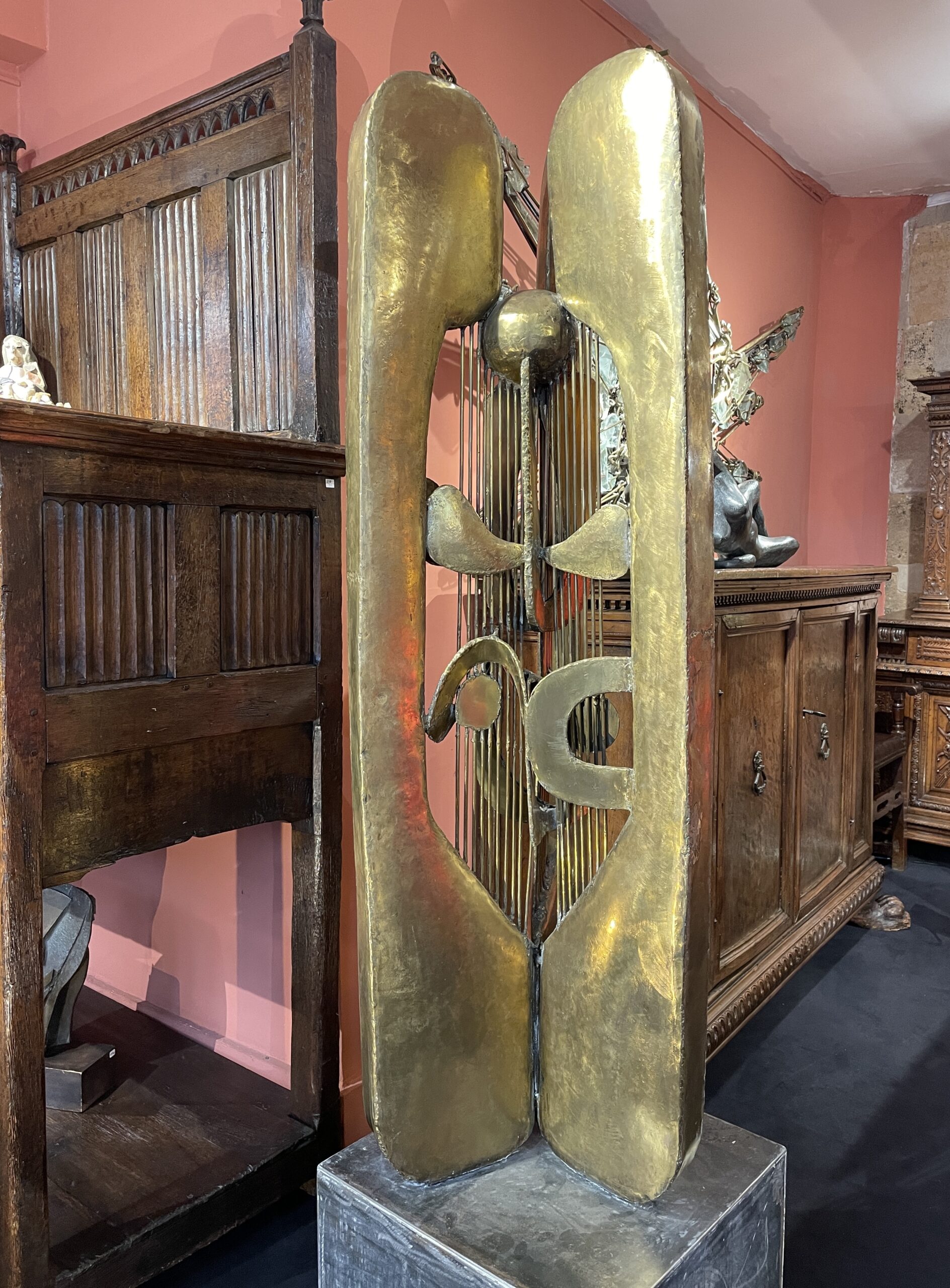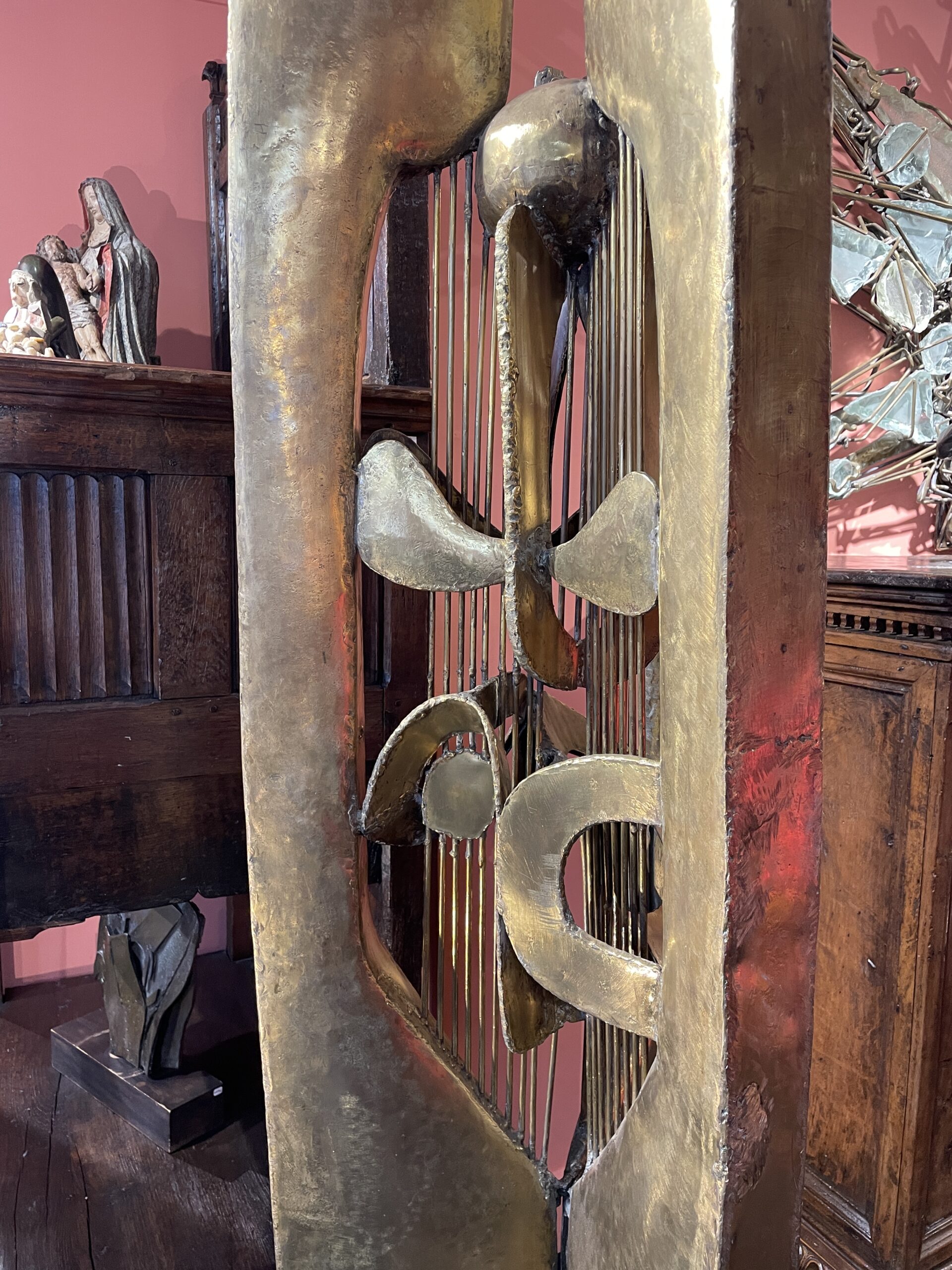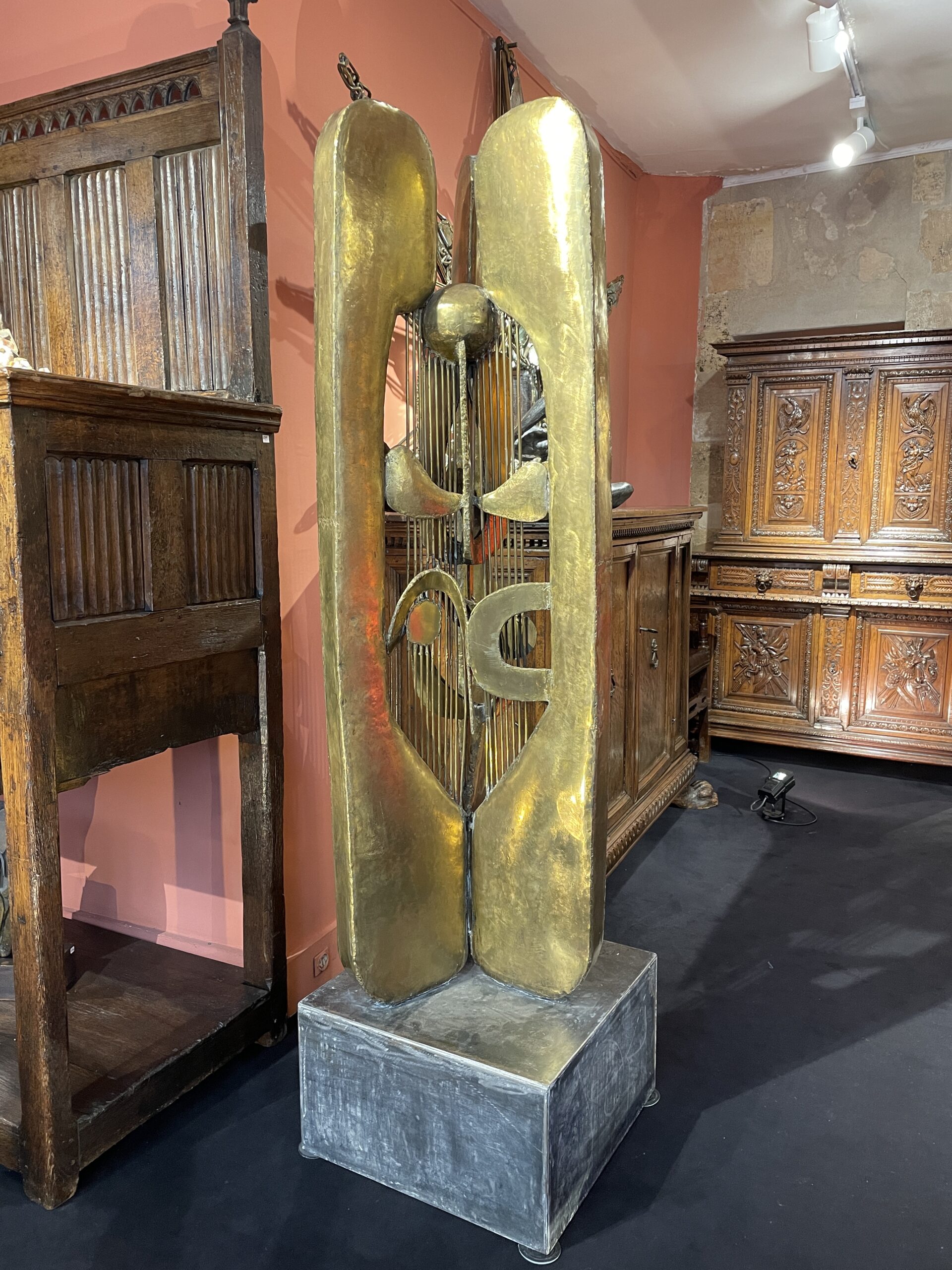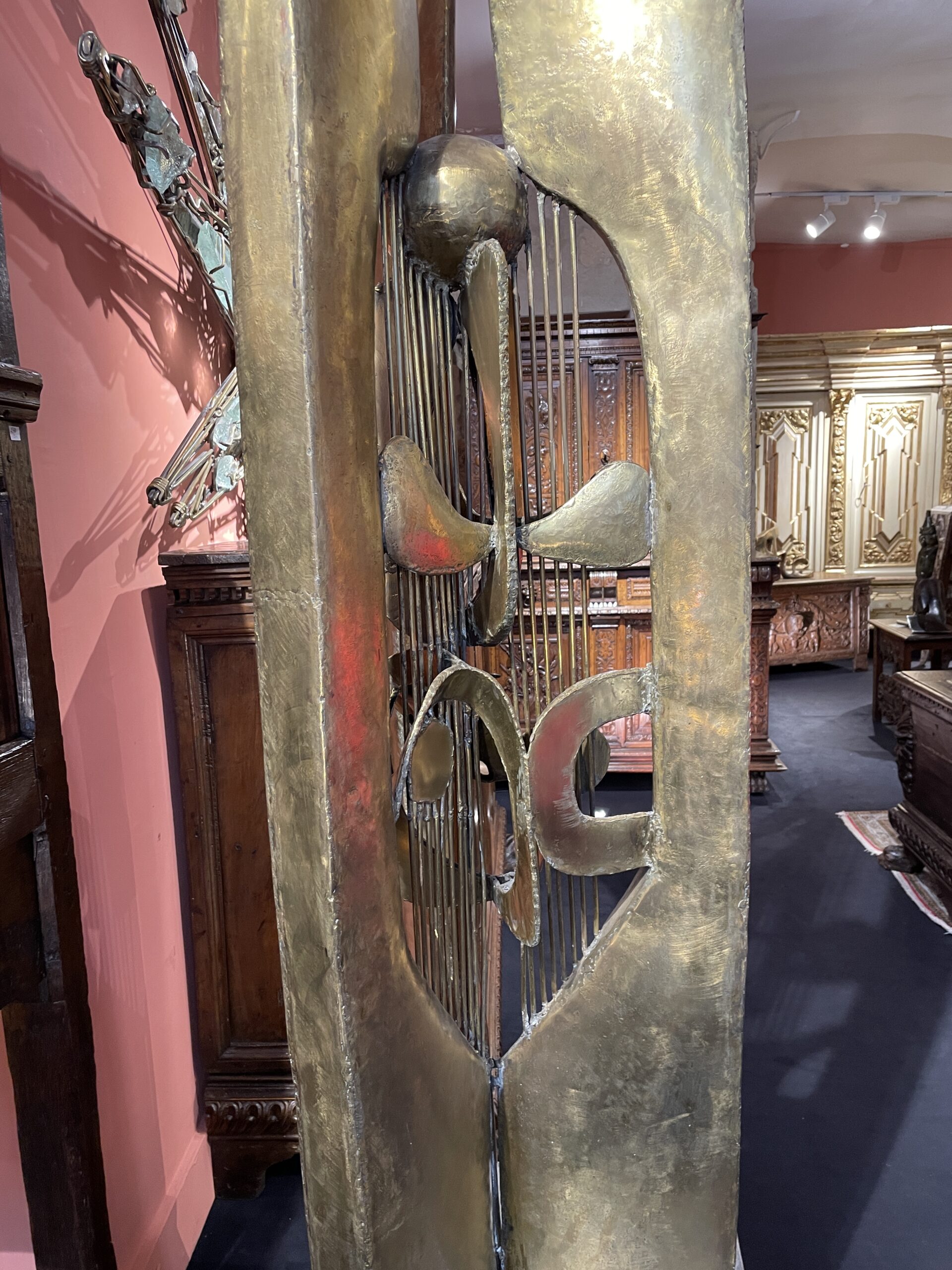Description
Constantin Andréou was born in Brazil, where he spent the first eight years of his life. He himself describes these years as a “living and fantastic dream.” He attributes the magical aspect that permeates his works to this period.
In 1925, he discovers Greece, the country of his parents. It is there that he begins to draw and sculpt. He is largely self-taught, confronting himself with ancient and classical sculpture and starting to sculpt in marble. In 1942, he exhibits at the Panhellenic Salon in Greece.
His move to Paris at the age of 28 enriches him through the “contact with artists and their cultural environment.” He attends the École des Arts Décoratifs and the École des Beaux-Arts for a few months. He meets Le Corbusier, with whom he works sporadically. This collaboration allows Andréou to better understand the relationship between architecture and sculpture, as well as the function of colors in space. These reflections will be crucial throughout his artistic career.
In his Parisian studio, he experiments and seeks to develop a new artistic language. He pioneers a new technique, that of welded brass, which remains the foundation of his artistic expression – brass sheets are cut, hammered, and shaped cold before being welded together. Then, they are filed to eliminate any granular texture, creating a perfectly smooth surface on which light glides.
While his work departs from figuration, it nonetheless maintains contact with reality, giving rise to sculptures whose dominant theme is the human form, especially the feminine form, as well as animals and birds.
Throughout his life, he creates extensively, exploring various techniques and mediums. His work is guided by sensitivity, and he claims a poetic art. He participates in numerous exhibitions in France, Greece, Brazil, the United States, Canada, and Japan, among others. He takes part in the Salon d’Automne six times, being appointed President for sculpture in 1982, as well as the Biennale of Antwerp (1953) and the Venice Biennale (1966).
Feminine Music, 1973
This golden brass sculpture is representative of Andréou’s work.
While the title reflects his interest in the music & the feminine figure, the form evokes the artist’s exploration of the issues of form and space.The artist multiplies planes and points of view. The work is admired in three dimensions. He breaks the solid volumes and allows the viewer’s eye to explore the inner complexity of the forms, as he did in his Columns series. The three smooth vertical masses form a framework, a cocoon, within which a core is revealed, traversed by stretched threads, spheres, and curves. Strict lines oppose and complement the soft curves. The work exudes the poetry, lyricism, and sensuality that so characterize the artist’s body of work.
Biography:
Andréou, Sculptures, Bas-reliefs in Colors, Bastas Editions, 1999.
Michèle Dubreucq, Andréou, 40 Years of Sculpture, Chennevières-sur-Marne, Ed. Jauffray, 1975.
Jean-Louis Ferrier, Andréou, Geneva, Editions Pierre Cailler, 1959, 77 p.
Link to the artist’s portfolio :
https://www.hellenicdiaspora.org/home/fr/portfolio-category_cat/constantin-andreou/


